Learn the BEST sealer for Quartzite countertops to keep them looking good for the next 25 years! Plus I’m sharing foods to watch out for, how to clean a stain if you get one, and the easy way to care for your Quartzite countertops on a daily basis.
If you’re looking for information on Quartz counters, head on over to this article. If you’re looking for information on the natural stone, Quartzite, you’re in the right place!
This article will cover:
During my kitchen remodel, I chose to use Quartzite for my countertops. I loved the natural beauty and the resemblance to marble but with easier maintenance. After looking at the various Quartzites that look like Marble, I decided to use Le Blanc Quartzite for my kitchen countertop.
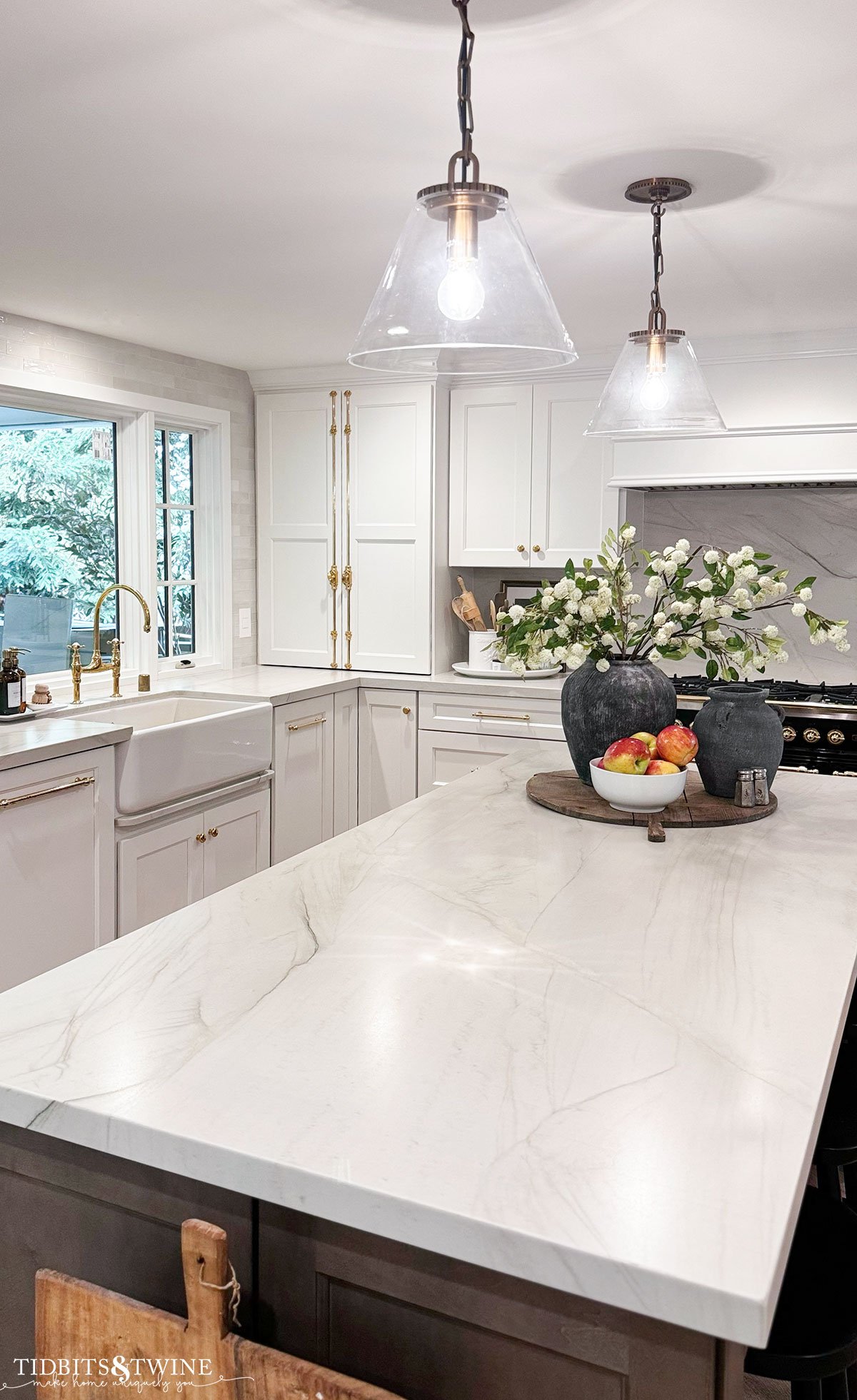
Fabricators typically seal counters before installation so that they are ready to use once installed – this is standard practice. In my case, my fabricator wasn’t particularly familiar with Quartzite and used this water-based sealer on my counters. It’s not that it’s a bad sealer, but it wasn’t the right sealer for my countertops.
How do I know? Well, this is how…
In an unfortunate turn of events, the workers in the kitchen didn’t cover the counters once they were installed and started putting buckets, cold drinks, tools, etc. on the counter. Well, all of these things on an unsealed counter were not a good combination. Within days of install, I had stains!!!!

Water bucket ring 
Who knows what made these yellow marks…
In yet a second and even more unfortunate turn of events, one of the workers decided he could remove the bucket stain by taking an electric sander to the top of my counter to sand it down. (No, I’m not kidding)
Well, my counters have a specialty honed leather finish and while he did sand out the bucket ring, he also completely scratched the finish of my counter. I was honestly in disbelief. But that part is a story for another day because using an electric sander on natural stone deserves to be its own post! (Plus, we haven’t figured out how to fix this issue yet so story TBD…)
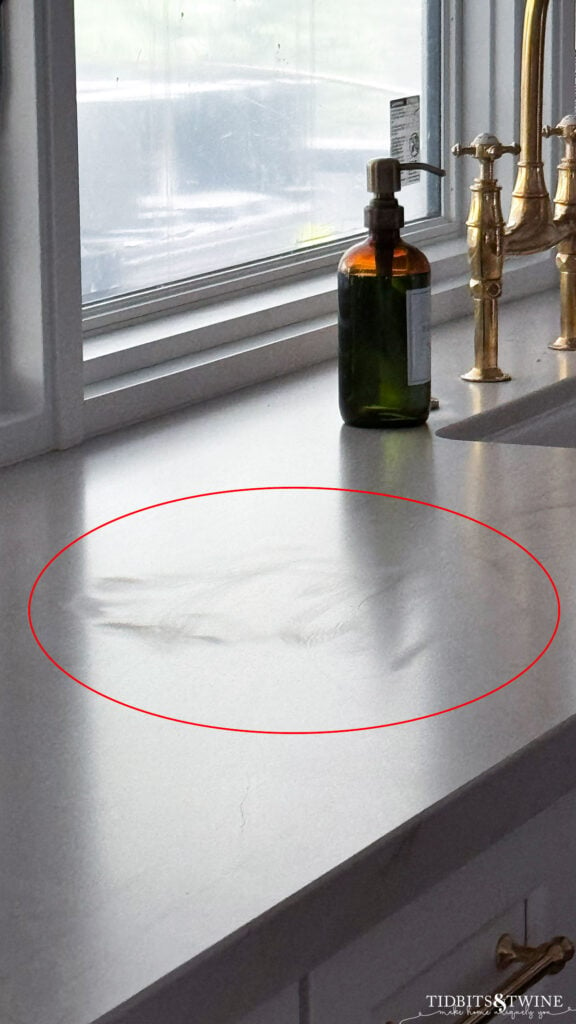
So yes, my counters were stained before I even moved back into the kitchen!! I decided to forego asking the fabricator to seal them (because we had other issues with him) and called around to find a reputable stone company. Thankfully, I found StoneRescue!
So today’s post is all about what happens if you don’t seal quartzite PLUS what is the BEST sealer for quartzite countertops. I’m including all of the tips and tidbits I learned from my hours with Keith from StoneRescue below. He was even kind enough to be my hand model. Lol!
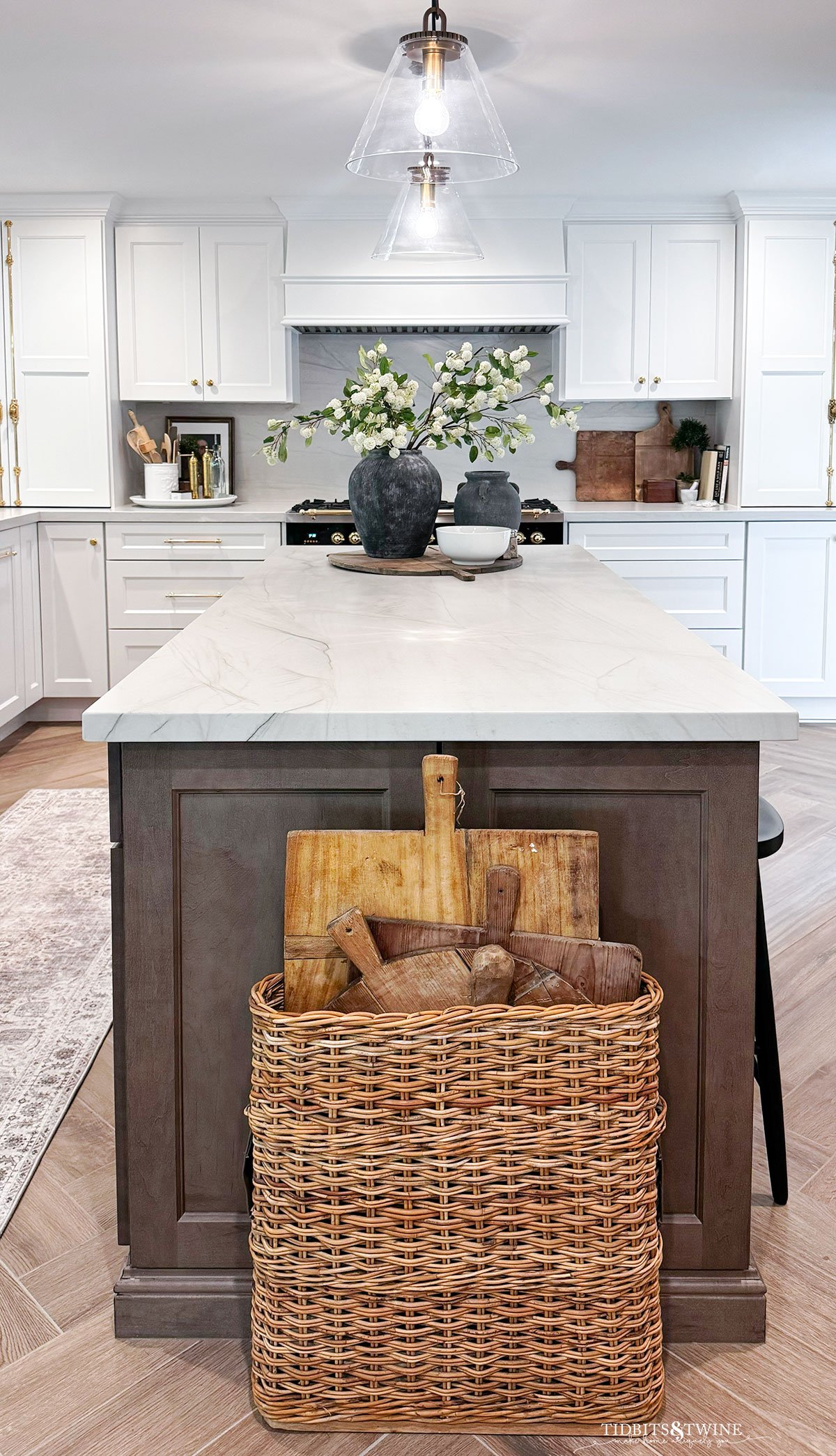
WHAT IS QUARTZITE?
Quartzite is a 100% natural stone formed from Sandstone under heat and high pressure. There is no “manufacturer” when it comes to quartzite since it is a natural material. Instead, quartzite slabs must be quarried from deep within the Earth’s surface. When referring to origin, instead of a manufacturer, you might hear a reference to a country. For example, quartzite from Brazil, Italy, etc.
Not all Quartzite is the same, though! Quartzite is actually Sandstone that has been exposed to immense heat and pressure within the Earth’s surface. This pressure then fuses the grains of sand together, changing it from Sandstone to Quartzite.
So, some Quartzite is more porous than others. Think of it as a sliding scale with Sandstone on one end and Quartzite on the other. Right in the middle is what is referred to as intermediate Quartzite. So, depending on how it was formed, a natural slab can fall anywhere in between!
In my case, my le Blanc Quartzite was actually very porous, more like a Sandstone.
Still wondering the difference between Quartz and Quartzite? Check out this article!
WHAT STAINS QUARTZITE
Unlike Marble, Quartzite doesn’t really etch from general kitchen acids like lemon juice or vinegar. You do need to be careful about harsh chemicals, though.
In terms of stains, things like red wine and coffee can discolor quartzite if it isn’t sealed, but it’s really the oil-based and grease stains you need to be cautious of. Things like cooking oil and butter can make a dark spot on unsealed quartzite that can be difficult to get out.
Tip: Hot oil will stain faster and deeper than cold because the heat thins the oil out, making it easier to sink deeper into the stone and thus, harder to extract. You’ll see this happen most on Quartzite backsplashes behind the stove where hot oil splatters up and hits the stone.
We never did figure out what made the yellow stains on my kitchen island, but there were about 10 yellow spots all at one end.
HOW TO REMOVE STAINS FROM QUARTZITE
StoneRescue’s go-to stain remover for organic stains is Stain Proof SMC Peroxide Cleaner. That’s right, good old hydrogen peroxide! This cleaner is roughly 12%-16% H2O2.
For tougher stains, they use a food-grade hydrogen peroxide that is about 35%-55% hydrogen peroxide or even sometimes a poultice to draw the stain out. The poultice is made by saturating the area with the 35%+ hydrogren peroxide topped with an organic paper towel, soaked again by hydrogen peroxide. Allow the poultice to completey dry before removing it.
In my case, StoneRescue was able to get all of the yellow stains out except one by using just the Stain Proof SMC Peroxide Cleaner. He was also able to get out an ink mark that had been left behind.
THE BEST SEALER FOR QUARTZITE
StoneRescue’s recommendation to really seal Quartizte include the use of two products: Stain Proof Dense Stone Impregnating Sealer and Tenax Proseal Nano. Both are impregnating sealers that help to repel liquids and keep them from sinking into the stone.
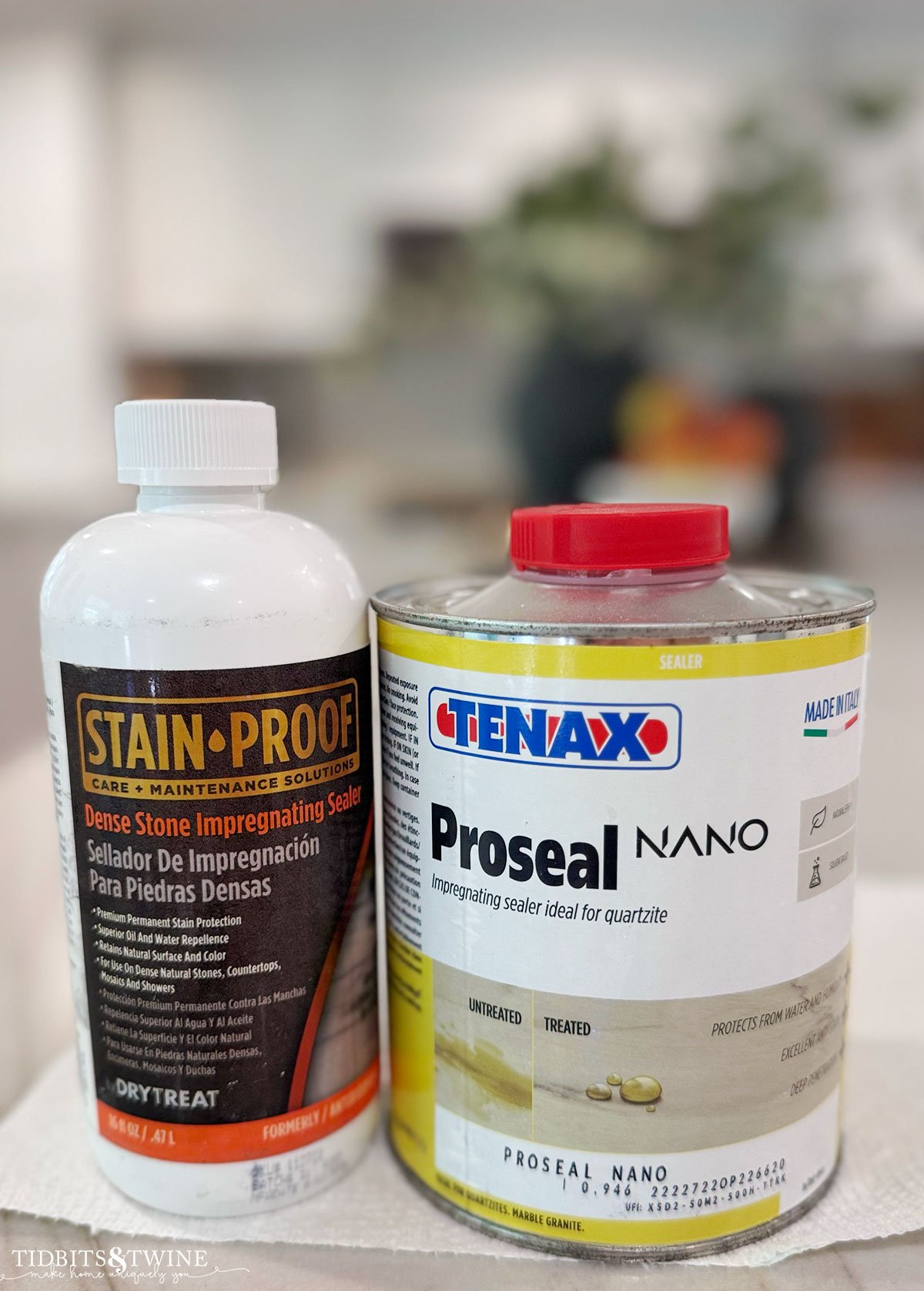
StainProof Dense Stone Impregnating Sealer
Think of the countertop like a measuring cup. You want the sealer to fill up the stone from the bottom to the top to ensure nothing can penetrate!
The Stain Proof Dense Stone Impregnating Sealer is a solvent-based sealer that is designed to penetrate deep into the stone. A second coat (an hour after the first coat) ensures that the sealer fills up all the porous areas within the stone.
Tenax Proseal Nano
To seal the upper layer, StoneRescue used Tenax Proseal Nano. This sealer is also solvant-based but doesn’t penetrate as far down as the first sealer, so it protects the area just below the surface.
Note that neither of these sealers are topical, so it is possible to get an oil-based stain on the surface of the stone, but thankfully, because it can’t penetrate deep into the Quartzite, it is easy to get out with the hydrogen peroxide cleaner mentioned above.
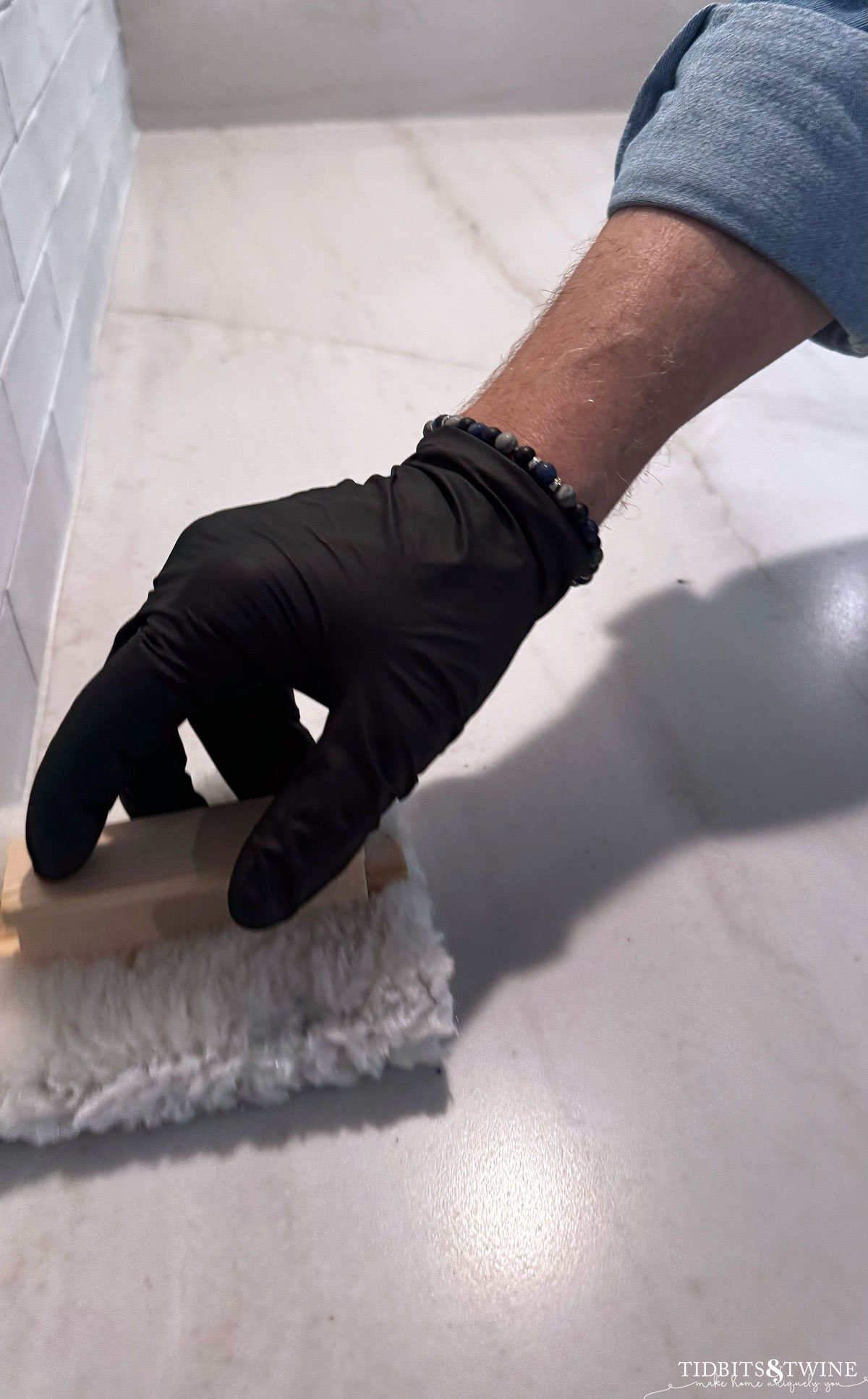
APPLICATION TIPS & TIDBITS
- These sealers have a very strong smell, so be sure to well-ventilated the area
- Wear gloves and protective eyewear and follow all precautions on the products
- Always test a new product in a small, inconspicuous area first. I used a scrap of Quartzite leftover from my project as a test spot.
- Apply with a lamb’s wool applicator pad, which provides a thick, even coat
- Apply the sealer in long horizontal strokes going lengthwise along the counter to ensure even coverage
- Use a paint brush for small areas like edges or details
- Allow the sealer to penetrate 10-15 minutes before wiping off – this is called the Dwell time.
- The countertop should look wet during the entire Dwell time. If within the first few minutes, an area soaks up the sealer and starts to look dry, apply more sealer and wait the 10 minutes.
- On some porous materials, you may have to reapply the sealer 2 or 3 times within the 10-15 minutes and that’s okay! Do not allow the sealer to dry completely on the surface!
- After a minimum of 10 minutes of wet countertop, dry thoroughly with a soft clean cloth
- Do not allow the sealer to dry on the countertop without wiping off.
- Your counters will darken and veining might appear harsher. Don’t panic! This is just temporary and it will dry back to its original appearance.
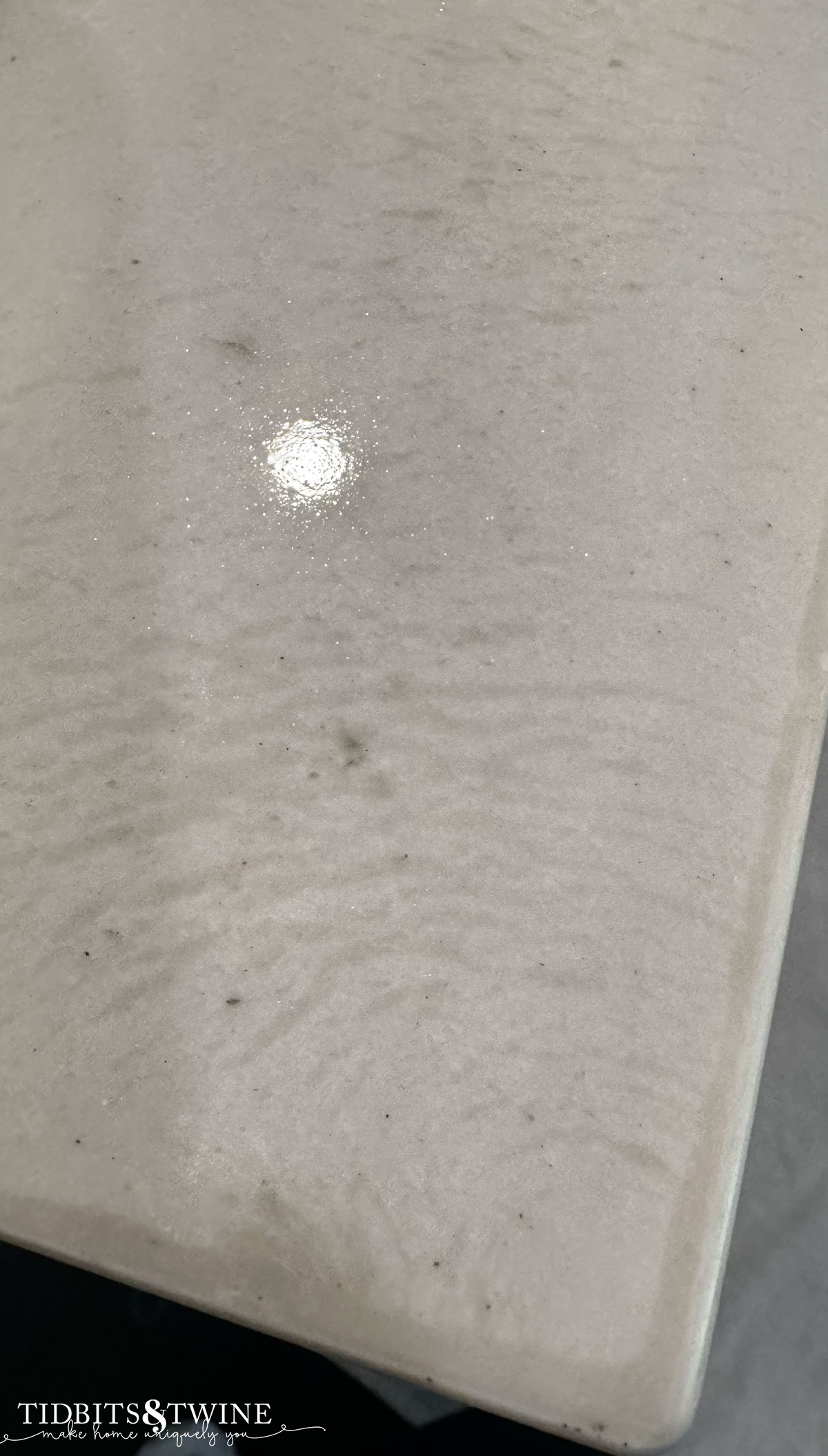
HOW LONG BEFORE USING
Wait at least 72 hours to use the countertops to allow the sealer to sink in. It can take up to one month for the sealer to fully cure so you’ll see better moisture repellant as the month goes on.
HOW OFTEN SHOULD YOU RESEAL
The Stain Proof Sealer has a 25 year guarantee. I asked StoneRescue if it really did hold up for 25 years and was told yes! So that’s great news!
Of course, if you see any spots appearing over time or feel that the countertop isn’t as protected as it once was, always clean it and reseal it. You can’t overseal!
DAILY QUARTZITE CLEANERS
For daily cleaning, you can use Stain Proof Daily Countertop Cleaner. I just spray it on the counter and wipe with a paper towel.
You can also just use a few drops of Dawn dish soap mixed with water in a spray bottle! This is mostly what I use and I save the Stain Proof cleaner for bigger messes because it’s more expensive.
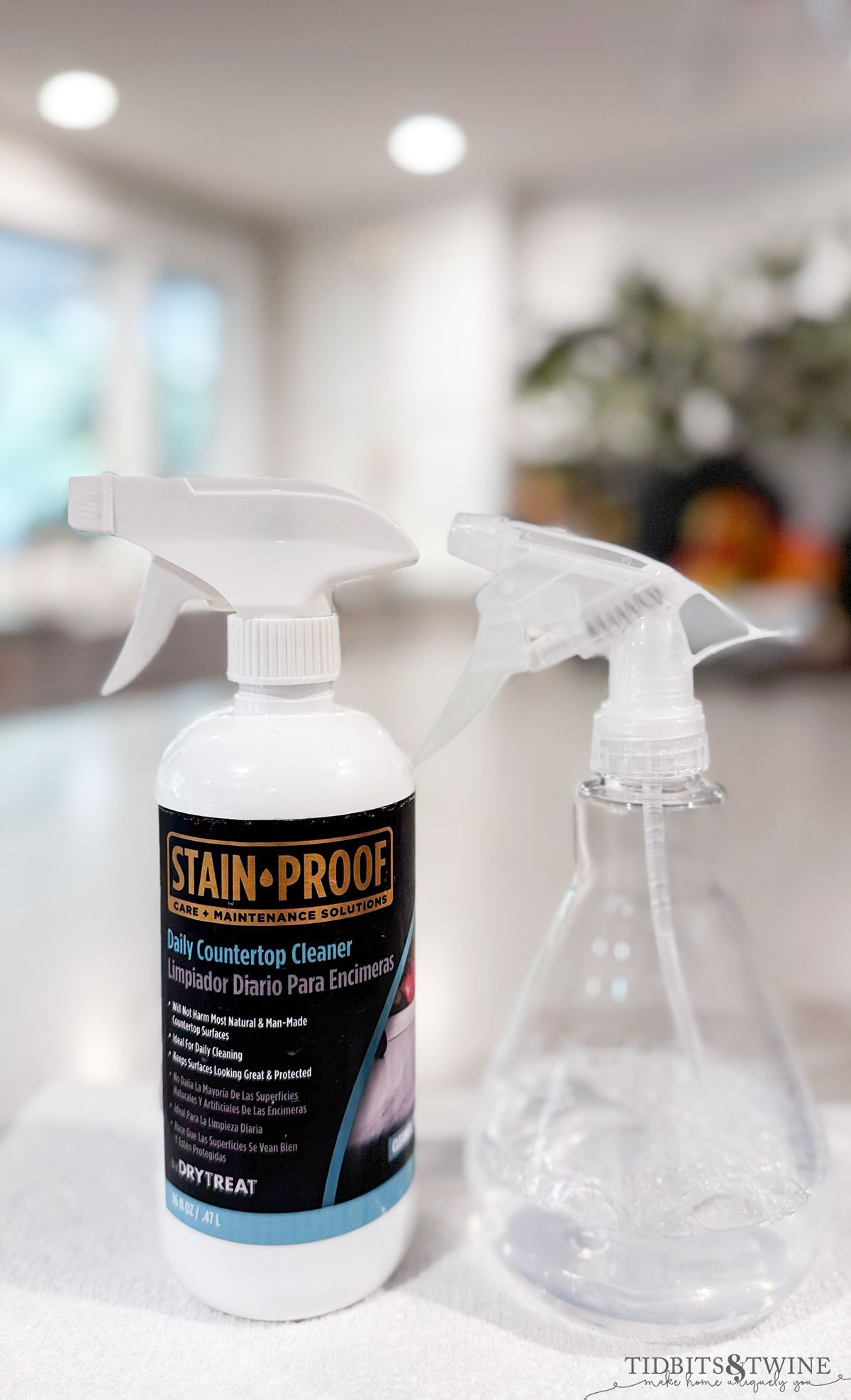
Hopefully this will help you to avoid the issues I had. You spend so much time choosing a beautiful slab for your project and you don’t want to see it stained!
More Decorating Tips
- Soft White vs Daylight Bulbs And which to Choose
- How High to Hang Pictures: Everything You Need to Know
- A Guide to Throw Pillow Sizes & Arrangements
- How to Put a Throw on a Couch – 8 Stylish Options



Join the Community
Let’s keep in touch! Get exclusive artwork plus the latest news delivered directly to your Inbox!


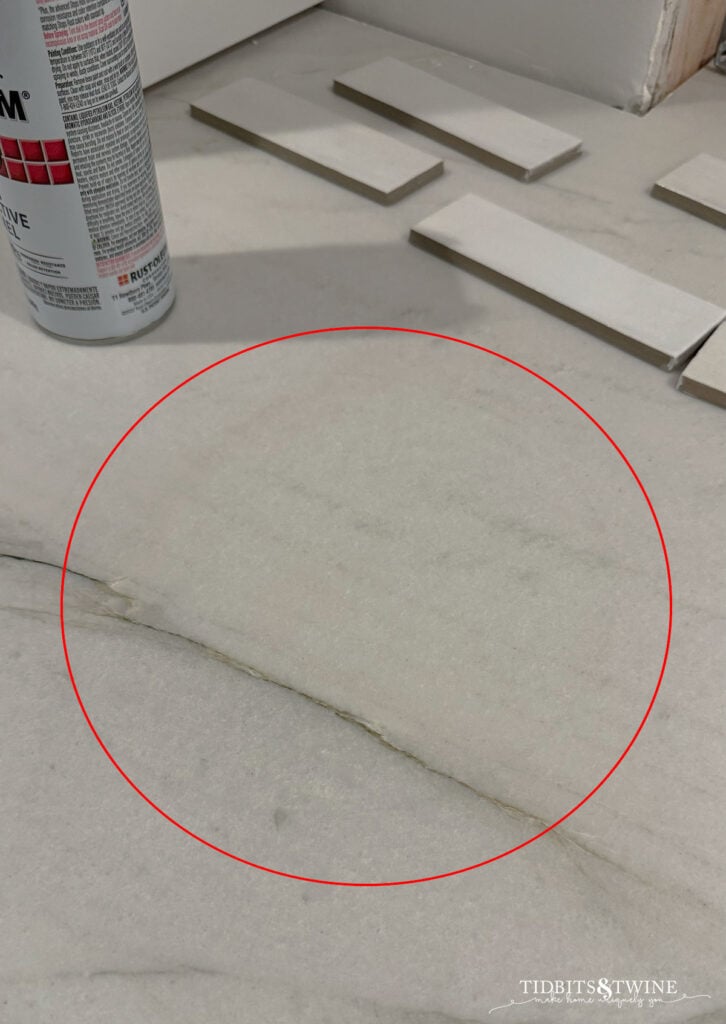
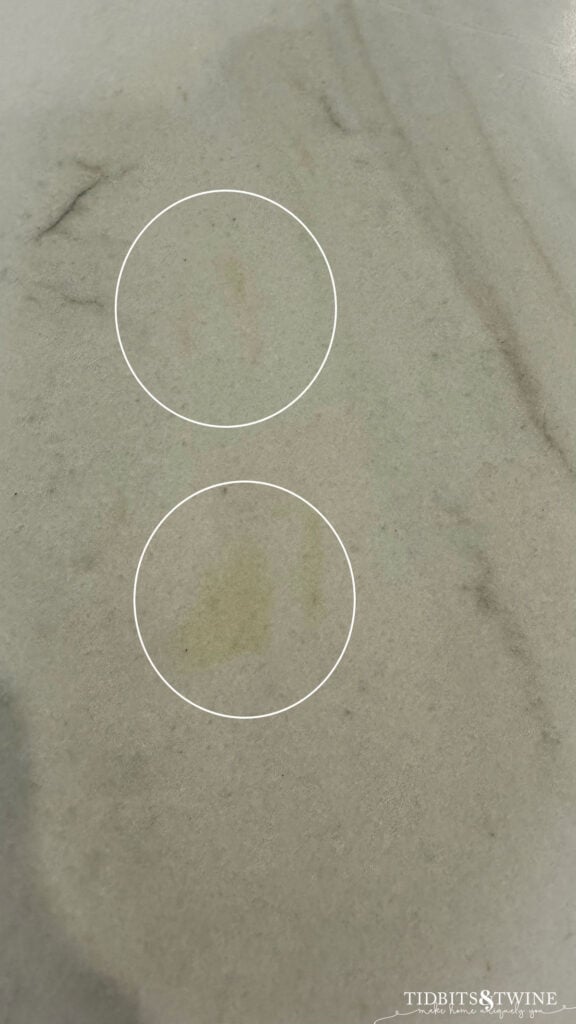
Great tips on sealing quartzite countertops! I’ve been looking for the best product to use, and your recommendations are super helpful. I appreciate the step-by-step instructions too. Can’t wait to try it out!
Thank you for sharing this informative post! I had no idea there were so many options for sealing quartzite countertops. I really appreciate the detailed comparisons and tips. Can’t wait to try out the recommended sealer!
Great tips! I’ve been looking for the right sealer for my quartzite countertops, and this post really helped clarify my options. I appreciate the detailed comparisons and personal recommendations!
Did your edge stains go away after you applied the sealer? My newly installed Quartzite countertops have staining along the edges which I believe, from my research, is silicon bleed. What was it in your case that caused the edge staining?
Hi Pri – Yes, the discoloration on the edge was just while the sealer was wet. Once it dried, it went back to its original appearance. I’m so sorry that you’re having an issue! I hope your fabricator will be able to fix the issue for you. Best of luck!
How long did they wait to apply the Tenax Proseal Nano?
Hi Rick – One hour after the second coat of StainProof sealer.
thanks! :D